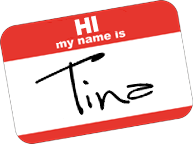
What is Crystal Meth?
Scroll DownWhat is Tina?
Is a popular nickname in gay, bi, queer circles for crystal methamphetamine. Other terms like Meth, Crystal, Dope, Speed, Ice, Glass, and Crank are common. Tina belongs to a family of drugs called amphetamines – powerful stimulants that speed up the body’s central nervous system (CNS).
For a history or Tina, check out our timeline here.
Tina is not legally available in Canada.
What does Tina look like?
Tina comes in two forms: powder and crystal. High-grade Tina crystals are semi-transparent and sheet-like. In powder-form, pure Tina is white. If the crystals or powder have coloured hues, this indicates the presence of impurities. Tina powder and crystals are odourless and extremely bitter tasting. The smoke produces a distinct chemical smell, sometimes compared to nail polish.
What is Tina made from?
The chemicals and processes used to produce Tina vary. Here’s a partial list of some of things often used to make it:
- pseudoephedrine or ephedrine (active ingredient in cold and cough medicines)
- red phosphorous (striking pad of a matchbook)
- acetone (nail polish remover)
- toluene (brake cleaner)
- lithium (camera batteries)
- anhydrous ammonia (farm fertilizer)
- muriatic acid (swimming pool cleaner)
- methanol (gasoline additive)
- naphtha (camp stove fuel)
- Draino™ and Red Devil Lye™ (drain cleaners)
- iodine (the stuff you put on a cut)
- denatured alcohol
These are some of the different substances used in the creation of crystal. Some prevention messages include a lists of ingredients, with pictures of them being mixed. Some guys find this helpful when cutting down or quitting Tina. It is important to note that these ingredients are not mixed together like baking a cake. They are used in various steps to form certain chemical reactions. Properly manufactured meth should not contain any of these substances. However, given the proliferation of different recipes available, combined with lack of chemistry skill, some of these items can be found in the final product. These contaminants can be toxic and add health complications
Crystal meth labs are dangerous for the people who work in them and who live nearby, as materials are flammable and explosive, and carelessness can lead to fires. For every kilo of crystal produced, 6 kgs. of toxic waste are produced.

